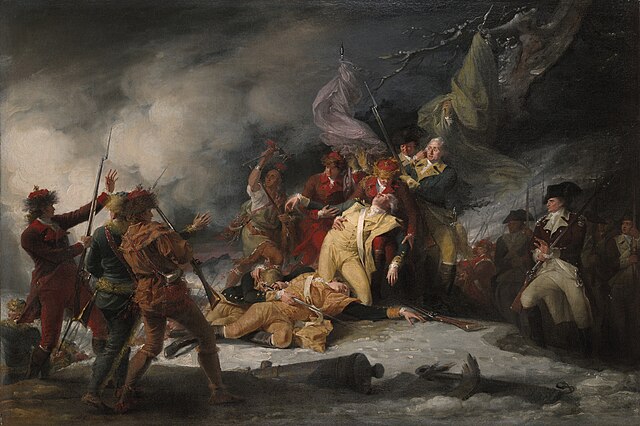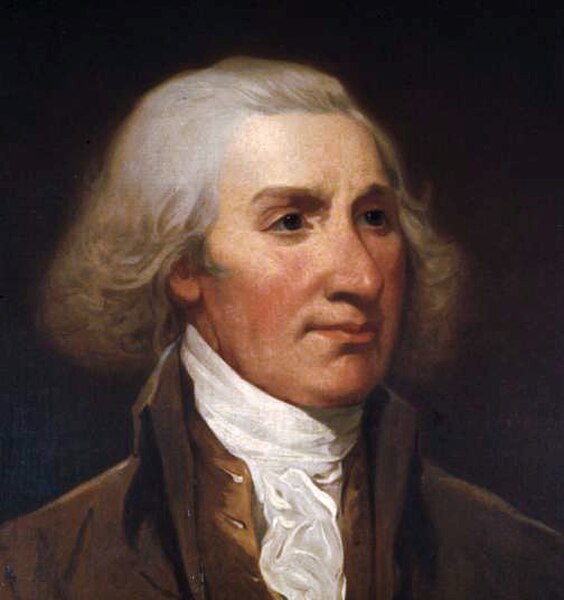Invasion of Quebec (1775)
The Invasion of Quebec was the first major military initiative by the newly formed Continental Army during the American Revolutionary War. The objective of the campaign was to seize the Province of Quebec from Great Britain, and persuade French-speaking Canadiens to join the revolution on the side of the Thirteen Colonies. One expedition left Fort Ticonderoga under Richard Montgomery, besieged and captured Fort St. Johns, and very nearly captured British General Guy Carleton when taking Montreal. The other expedition, under Benedict Arnold, left Cambridge, Massachusetts, and traveled with great difficulty through the wilderness of Maine to Quebec City. The two forces joined there, but they were defeated at the Battle of Quebec in December 1775.
The Death of General Montgomery in the Attack on Quebec, December 31, 1775, a 1786 portrait by John Trumbull
General Philip Schuyler
This painting by Benjamin West is usually identified as a portrait of Guy Johnson, although a recent biography of Sir William Johnson claims that it actually depicts Sir William, Guy's uncle.
Brigadier General Richard Montgomery
Fort Ticonderoga, formerly Fort Carillon, is a large 18th-century star fort built by the French at a narrows near the south end of Lake Champlain, in northern New York, in the United States. It was constructed by Canadian-born French military engineer Michel Chartier de Lotbinière, Marquis de Lotbinière between October 1755 and 1757, during the action in the "North American theater" of the Seven Years' War, often referred to in the US as the French and Indian War. The fort was of strategic importance during the 18th-century colonial conflicts between Great Britain and France, and again played an important role during the Revolutionary War.
Fort Ticonderoga from Mount Defiance
Engraving after a 1609 drawing by Champlain of a Native American battle near Ticonderoga
Officers' barracks, right; soldiers' barracks, left
Inside the first wall; officers' barracks at left, soldiers' barracks at right





